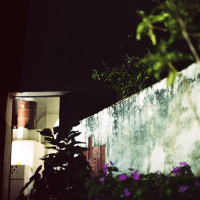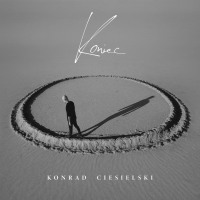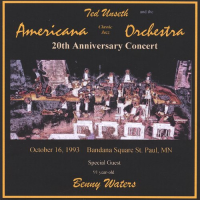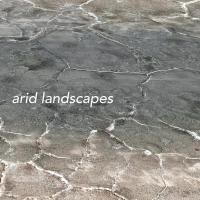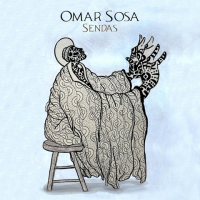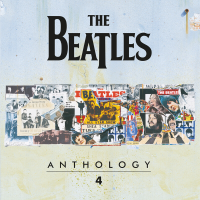Home » Jazz Articles » Extended Analysis » Brian Eno: Brian Eno and David Byrne: My Life In The Bus...
Brian Eno: Brian Eno and David Byrne: My Life In The Bush Of Ghosts
 Brian Eno and David Byrne
Brian Eno and David Byrne My Life In The Bush Of Ghosts
Nonesuch
2006 (1981)
A lot of people get called geniuses, and not all of them deserve it. But if a genius is someone with that rare gift of transforming the intangible into the tangible, of turning ideas into reality, then Brian Eno is a genius. One of the far-reaching innovations he helped bring about was the transformation of studio technology into a musical instrument. This is brilliantly realised on My Life In The Bush Of Ghosts, made with Talking Heads' David Byrne in 1981.
It's difficult to think of many artists who have had as big an impact on modern music as Eno has over the past thirty years. He's been praised—and blamed—for many things, and probably wears more tags (including ambient pioneer, glam rocker, hit producer, multimedia artist, technological innovator, worldbeat proponent, self-described non-musician) than any comparable artist. He's pursued a variety of artistic avenues alongside music and the resultant cross-fertilisation has enriched his work.
My Life In The Bush Of Ghosts was conceived after Eno completed work with David Bowie on the "Berlin trilogy" and had relocated from Europe to New York. He was moving away from rock music, but he found some of the New York bands exciting enough to produce. He worked with Devo, DNA, James Chance, Teenage Jesus and on Robert Fripp's first solo album, Exposure . Most importantly, he worked with Talking Heads on three albums, and on the third, Remain In Light, he was credited both as the producer and a songwriter. He was becoming the band's fifth, invisible member.
Then came this project with David Byrne. An artist with a reputation for refusing to compromise his creative integrity, but who nonetheless made music that was capable of being enjoyed by a wide range of listeners, Byrne perfectly complemented Eno's intellectual vigour and technical ability.
The original idea was to create an album of fake ethnic music, something along the lines of the imagined Eskimo music on Resident's Eskimo. The album's title was taken from a novel by the Nigerian writer Amos Tutuola, about a young man who ventures out of his native village and into the mysterious and unfamiliar bush beyond. (The bush of ghosts is a series of towns, each inhabited by a different type of ghost. Each ghost can be read as representing a different condition in life). But the album title was chosen after recording was completed, and beside a shared concern with wandering is unrelated to Tutola's book.
With the help of Chris Frantz, Bill Laswell, Tim Wright, David van Tieghem, Busta Jones and others, Byrne and Eno created music using a wide range of instruments and, significantly, extensive sampling. Samples were taken from a variety of sources including radio talk-show hosts, gospel singers, Lebanese mountain singers, preachers, Muslim chants and an exorcist. The music reflected Byrne and Eno's interest in non-Western styles, especially from Africa and the Middle East. This was at least a decade before the emergence of world music as a mainstream genre.
Today, the idea of sampling something old to create something new is such a commonplace that most people might find a record like My Life In The Bush Of Ghosts unremarkable. With today's advanced technology, even a small child can create music based on samples and loops. But back in analog 1981, Byrne and Eno had to do things with scissors and tapes and to play samples in real time.
Byrne and Eno's cultural imitations and borrowings led to passionate exchanges about cultural imperialism among critics and fans. But the duo were re-imagining the future and their work was key in creating a new genre, one which remains very much alive, vibrant and relevant today. Twenty five years after its original release, My Life In The Bush Of Ghosts has been the subject of many examinations, analyses and other academic investigations, and has inspired artists from Public Enemy and DJ Food to Moby, Aparatchiks and Radiohead.
The album was recorded during a really fertile period for Talking Heads, in between Fear Of Music and Remain In Light. But due to legal problems its released was delayed until after that of Remain In Light. Authorisation hadn't been obtained for sampling Kathryn Kuhlman on a track called "Into The Spirit World" (which was later reworked and renamed "The Jezebel Spirit"). Another track, "Qu'ran," was replaced with "Very Very Hungry" after the Islamic Council of Great Britain complained about the use of extracts from the holy book.
This last track isn't featured on the reissue (though it can still be found on some early pressings). But the new edition does include seven previously unreleased tunes, some of which were until recently available on the poor quality, cassette-recorded bootleg, Ghosts. Byrne, however, personally supervised the reissue's remastering and audio quality is superb.
After 25 years, My Life In The Bush Of Ghosts seems not to have aged at all. It still surprises, and with the new material it surprises even more. The new tracks are dense, complex pieces of music which reveal more African tribal influences than the material on the original album. Tracks like "New Feet" and "Number 8 Mix," with its danceable beats and Middle Eastern vocals and sampled instruments, clearly point to the work of modern artists like Thievery Corporation and the Chemical Brothers. Both tracks are vivid reminders that Byrne and Eno's extensive use of samples and constructed beats created a genre of great vitality and longevity.
The duo have also launched a web site, which includes photographs from the recording sessions, essays, interesting new artwork— and, perhaps most valuably, multi-tracks which can be freely downloaded and remixed. The wheel has gone full circle, and Byrne and Eno are practicing what they preach: giving something back to the remix and sampling culture they helped create in the first place.
In this edition, My Life In The Bush Of Ghosts is an entirely new album and, because of the inclusion of previously unreleased material, one of great importance. The reissue of the year so far.
Visit David Byrne and Brian Eno on the web.
Tracks and Personnel
Tracks
America Is Waiting; Mea Culpa; Regiment; Help Me Somebody; The Jezebel Spirit; Very, Very Hungry; Moonlight In Glory; The Carrier; A Secret Life; Come With Us; Mountain Of Needles; Pitch To Voltage; Two Against Three; Vocal Outtakes; New Feet; Defiant; Number 8 Mix; Solo Guitar With Tin Foil.
Personnel:
Brian Eno: guitars, basses, synthesizers, drums, percussion, found objects; David Byrne: guitars, basses, synthesizers, drums, percussion, found objects; John Cooksey: drums (4); Chris Franz: drums (3); Dennis Keeley: bodran (2); Mingo Lewis: bata, sticks (5, 8); Prairie Prince: can, bass drum (5, 8); Jose Rossy: congas, agong-gong (7); Steve Scales: congas, metals (4); David van Tieghem: drums, percussion (1,3); Busta Jones: bass (3); Bill Laswell: bass (1); Tim Wright: click bass (1); April Potts, Eglingham Hall: rooks (4).
Track Listing
Track Name #1; Track Name #2; Track Name #3.
Personnel
Brian Eno
synthesizerMusician Name #1: instrument; Musician Name #2: instrument; Musician Name #3: instrument.
Album information
Title: Brian Eno and David Byrne: My Life In The Bush Of Ghosts | Year Released: 2006 | Record Label: Nonesuch Records
Tags
PREVIOUS / NEXT
Support All About Jazz
 All About Jazz has been a pillar of jazz since 1995, championing it as an art form and, more importantly, supporting the musicians who make it. Our enduring commitment has made "AAJ" one of the most culturally important websites of its kind, read by hundreds of thousands of fans, musicians and industry figures every month.
All About Jazz has been a pillar of jazz since 1995, championing it as an art form and, more importantly, supporting the musicians who make it. Our enduring commitment has made "AAJ" one of the most culturally important websites of its kind, read by hundreds of thousands of fans, musicians and industry figures every month.













